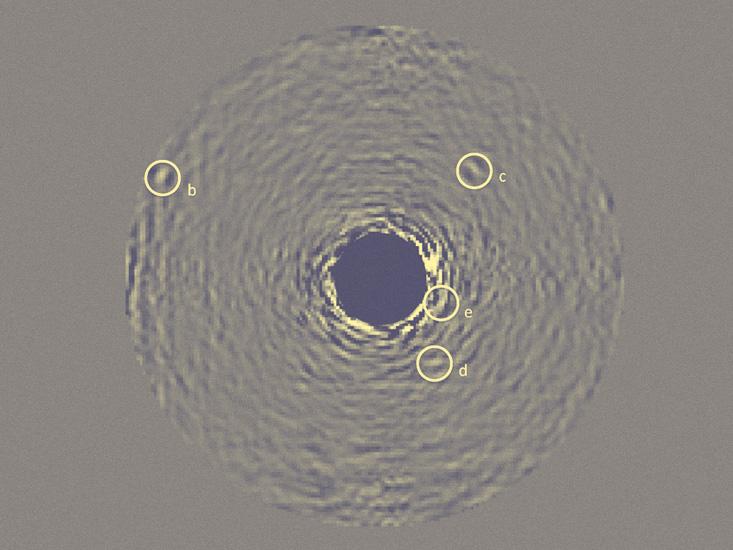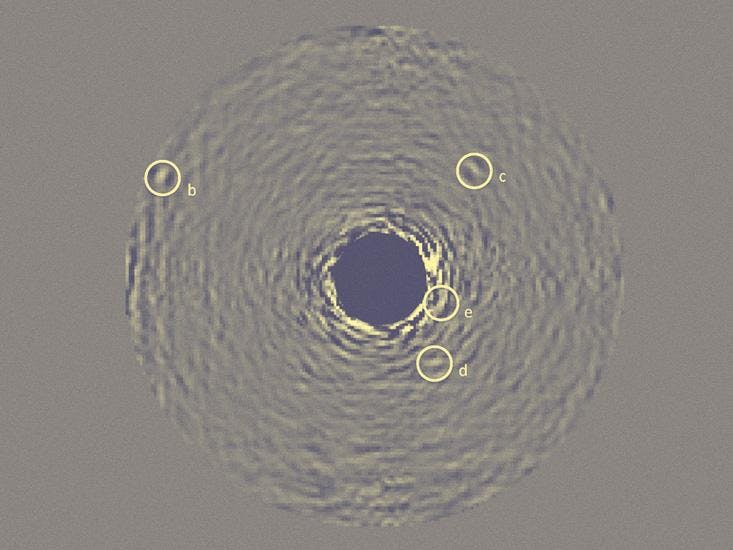
Despite
their great distance from Earthbound politics, exoplanets were the
topic of a joint
hearing
on May 9th of the House space and research subcommittees. The recent
discovery of a trio of temperate super-Earths
was the hearing’s impetus, but most of the discussion was devoted
to future prospects—chiefly, how and when scientists might learn
whether any exoplanet actually harbors an Earth-like environment or
even alien life. Leaders from NASA,
the National
Science Foundation,
and the SETI
Institute
all spoke of steady progress toward those goals, though their sunny
forecasts were arguably based more on faith than facts. Right now,
speculating about the environment of any potentially habitable
exoplanet is rather like guessing an individual’s facial features
based only on their height and weight, and without some sea change in
policy or funding, this situation seems set to persist for decades to
come.
This
may be surprising considering that astronomy is in the midst of an
exoplanet boom, a golden age of extrasolar discovery, and a host of
current and upcoming ground- and space-based projects will ensure the
boom continues for years to come. We are learning more than ever
before about the formation, distribution, and evolution of
exoplanets. The Hubble and Spitzer space telescopes can already
crudely study the upper atmospheres of select hot, giant exoplanets
that happen to “transit,” or cross the faces of, their stars, as
seen from here. The James
Webb Space Telescope (JWST),
which may launch as early as 2018, could do
the same [pdf] for some smaller, cooler exoplanets that orbit and transit nearby
stars, while also snapping family portraits of nascent and young
planetary systems. Though nearing the end of its life, the Kepler
mission has found nearly 3,000 likely exoplanets transiting faraway
stars in a single swatch of sky, and a follow-up, all-sky mission
called TESS
should launch in 2017 to look for more transiting worlds, some of
which could then be closely investigated by JWST. These are only a
few of the space-based planet-finders; there are too many other new
and worthwhile projects to list here.
And
yet of all the projects, instruments, and telescopes now operating or
soon to debut, not one is capable of delivering what the search for
extrasolar life most requires: The atmospheric spectra of any
potentially habitable planets around a representative sample of the
Sun’s neighboring stars. Whenever starlight shines through or
scatters off a planet’s atmosphere, the atoms and molecules in the
air absorb some of the light, leaving their faint chemical
fingerprints. Astronomers can discern these fingerprints by gathering
enough of that light to create a rainbow-like spectrum. A planet’s spectrum can help determine whether
that world is habitable or even inhabited. The spectral fingerprints
of water vapor or carbon dioxide, two powerful greenhouse gases,
would signpost a warm, wet, rocky world, and an abundance of oxygen
and methane could be evidence of a biosphere of photosynthetic plants
and chemosynthetic bacteria. With such tantalizing clues in hand,
more in-depth telescopic observations could eventually reveal even
more secrets, as across the light-years astronomers map the
distribution of lands, seas, and weather patterns of Earth-like alien
planets.
The exoplanet’s spectrum must be painstakingly sifted from a flood of raw starlight some ten million to ten billion times brighter. Astronomers have already demonstrated a handful of ways to achieve this.
As
straightforward as this all sounds, there is an inconvenient
underlying truth that few planet-hunters wish to admit—particularly
in front of deficit-weary taxpayers: Pursuing the light of other
living worlds will almost unavoidably be a multi-billion-dollar
venture.
Barring
various extremely
implausible
scenarios, any conceivable Earth-like exoplanet will be a small, dim
object very close to its much brighter, larger star. Its spectrum
must be gathered photon by photon, with each individual particle of
planetary light painstakingly sifted from a flood of raw starlight
some ten million to ten billion times brighter. As difficult as this
“starlight suppression” sounds, astronomers have already devised
and lab-demonstrated a handful of ways to achieve it, using
techniques like coronagraphy
and interferometry.
(See a summary
of some of the methods here
[pdf].) The bigger, more fundamental problem is that obtaining the
spectrum from just one potentially habitable exoplanet is unlikely to
be enough; satisfying our search for life, gaining some inkling of
our cosmic context, will probably require surveying hundreds or
thousands of worlds in the relatively short timespan of one
space-telescope mission. To quickly, efficiently perform such a
search requires one or more very large, very sophisticated
starlight-suppressing space telescopes—telescopes that currently
have no funding and very little public awareness.
I
would say that in addition to being “very large” and “very
sophisticated,” these telescopes are also “very expensive”—except
on federal or national scales that’s simply not the case. Assuming
it would take some $5 billion to develop, build, launch, and operate
one such space observatory, any number of telling comparisons present
themselves. That’s less than what the U.S. government spends for a
few weeks of its military presence
in the Middle East
and Central Asia, or for a dozen F-22
fighter jets.
As a nation we spend more each year on chocolate
candy.
The point of course isn’t that we should eliminate defense spending
or stop buying candy bars, but simply that the great wealth of our
world is more than adequate to bestow a priceless gift to all
humankind in perpetuity. What our political leaders and philanthropic
billionaires should understand is that the discovery of other Earths
and other life beyond our solar system is something that can happen
only once in our history, and something that is just now within our
grasp. With just a relatively tiny fraction of public or private
funding and effort, we could all soon see a day where anyone on Earth
can look up to some bright star in the night sky and know a world
circles there from which someone may be looking right back.
Wouldn’t
that be worthwhile?
Lee Billings is a freelance writer living in New York City. Five Billion Years of Solitude, his book on the search for Earth-like exoplanets, will be published this October by Current/Penguin.



